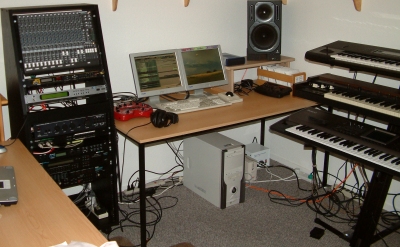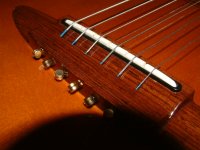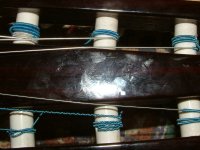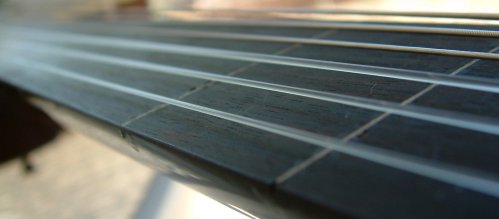Here’s the pattern: It all starts when someone (Tony!) asks for a CD of my music. So I start compiling the tracks that I want to include, and I hear something in one of the pieces that was supposed to be finished and completed, and think, “I’ll just open up the project in SONAR and tidy up that glitch.” Well, the first thing that happens is that the project is from SONAR 2.0 and I have to migrate it to SONAR 5. No biggy… but there are a few features in SONAR 5 that really make things easier – like track folders and effect bussing and improved effect plug-ins.
Then I realize how much I like actually playing this music instead of just listening to it. So I break out one of my guitars – these days usually the Carvin HF2 – and mute an instrument in the Track View, and play along. Then I make a mistake, or play something different for a change, and suddenly I really want to re-record the entire track. Because I can play it better now. Or this newer instrument sounds better. Or the timing was off a little, before. Or I have a better microphone now.
Which leads me to my current project, a piece called “Strange But True”. The excuse for firing up the studio on this one was that SONAR 5 included a plug in called “V-Vocal” which provides sophisticated pitch correction for monophonic audio sources – such as vocal tracks. I can usually sing in tune but being a perfectionist, I am never completely happy with the results. I think of V-Vocal as spackle – applied judiciously it is pretty seamless and improves an acceptable performance to one where it can sound like the vocalist was just “on” during the session. I like it.
If only I could stop there. But no… As I listened to the mix, it seemed to me that the Ovation steel string guitar was out of time in places. So I break out the Ovation and put some new strings on it, tune up, and start to play along.
Then I have an idea – instead of just tracking the built-in piezo acoustic pickup in the guitar, why don’t I simultaneously record the natural acoustic sound using my new MXR condenser microphone? (Yowser… I say “new” but I see I got it more than a year ago…). Seemed like a good idea.
Oh boy. I didn’t know what I was missing. Or to put it another way, I did know but I didn’t care. Well, now I care. The acoustic sound is way better than the internal pickup. It has “more wood” in it. Also more finger noise, but hey, that’s part of the performance.
Several weeks pass as I regrow callouses on my fingers, and practice playing the notes cleanly.
To cut a long story short, starting with the much improved acoustic tone, I’ve re-recorded all the guitar parts. I’ve also replaced all the synthesizer parts with sounds from my Roland VK-8 virtual tone-wheel organ, because it sounds so good. Much less artificial and, well, electronic. It’s not a real Hammond organ but it’s as close as I’m ever going to get. I didn’t realize how suited it was to this particular piece of music, but once I started playing around and trying things out, it was a no-brainer.
Now I’m working on re-doing the drums and percussion. Real tamborine, real shaker, real doumbek.
I know this doesn’t get me any closer to finishing the other various songs and bits of music I have in my head, but this is too much fun. The final result is going to be awesome. And this time, it’ll really be finished. No, I mean it.
Why are you looking at me like that?





Recent Comments